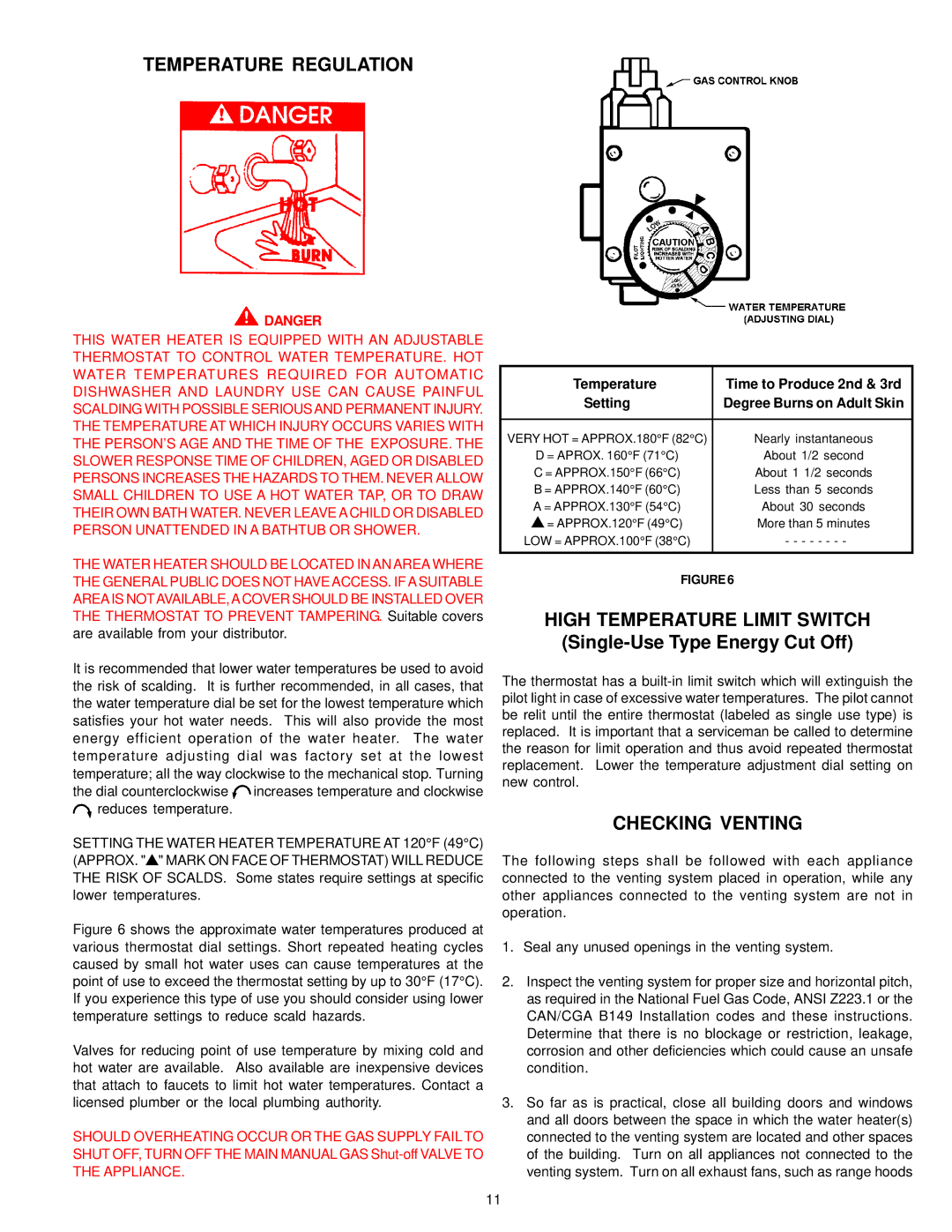196114-000 specifications
State Industries 196114-000 is a prominent model in the realm of water heaters, designed to meet the diverse needs of modern households and commercial establishments. Renowned for its reliability and efficiency, this unit embodies advanced technologies that ensure optimal performance, durability, and energy savings.One of the primary features of the 196114-000 is its high-capacity water tank, which is constructed from robust materials that resist corrosion and wear. This not only extends the lifespan of the unit but also ensures that hot water is readily available for various applications, whether it's for cooking, cleaning, or bathing. The tank's insulation aids in maintaining water temperature, reducing energy consumption and costs over time.
In terms of technology, the State Industries 196114-000 incorporates state-of-the-art heating elements that provide rapid heating of water. These elements are designed for efficiency, which translates into faster recovery rates and consistent water temperature. Additionally, the system employs smart control mechanisms that monitor water usage and adjust heating cycles accordingly, enhancing energy efficiency without compromising performance.
Safety features are another critical aspect of the 196114-000. It includes automatic shut-off functionalities, which protect against overheating and pressure build-up. This ensures not only the longevity of the unit but also safeguards users from potential hazards associated with malfunctioning water heaters.
The design of the 196114-000 is user-friendly, featuring an intuitive control panel that allows for easy temperature adjustments and monitoring. Maintenance is also simplified, with accessible components that make servicing straightforward and wear part replacement feasible without specialized tools.
Moreover, the compatibility of the State Industries 196114-000 with various installation configurations makes it a versatile choice for both residential and commercial applications. Its compact size allows for floor or wall mounting, catering to spaces with limited square footage.
In conclusion, the State Industries 196114-000 stands out in the competitive market of water heaters due to its blend of efficiency, safety, and advanced technology. Whether you're looking to upgrade your current system or install a new unit, this model promises reliable hot water supply and cost-effective operation, making it a trusted choice for countless users.

